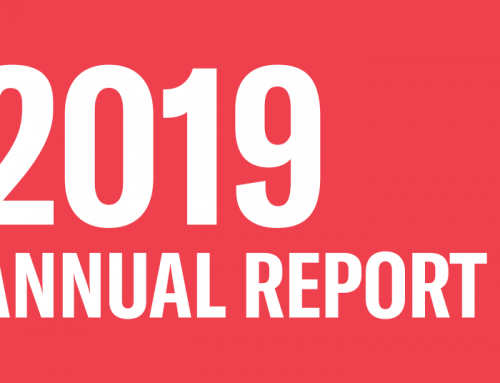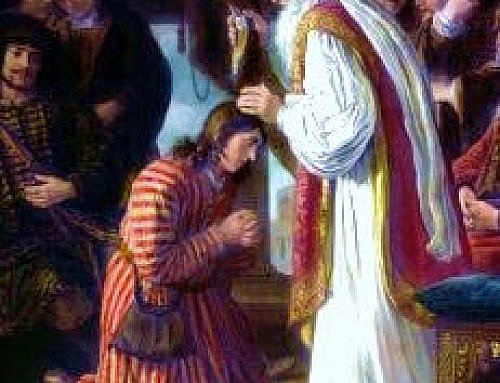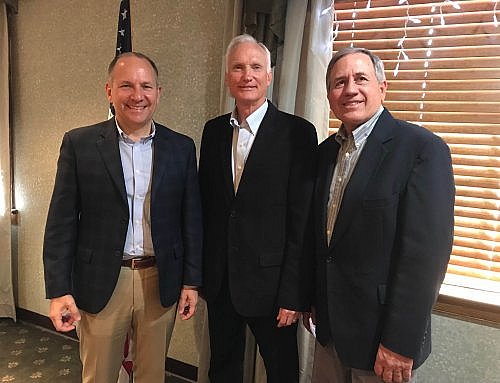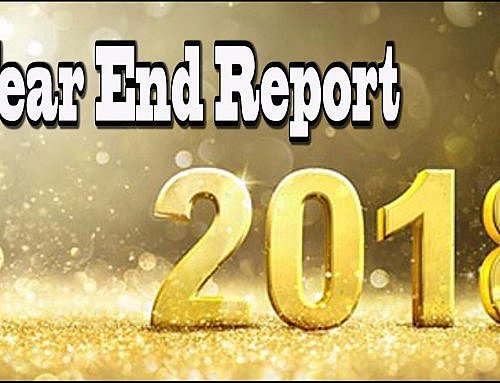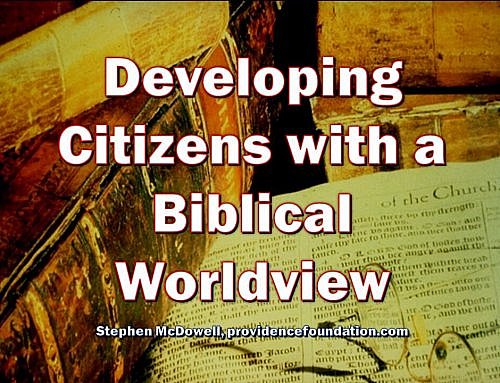For PDF Version: The Miracle at Sapoá
By Kelley Vincent
Late the evening of March 23, 1988, in the tiny town of Sapoá, Nicaragua, a group of men filed into a large conference room packed with reporters from every major news organization in the world. In the light of dozens of TV video recorders and camera flashes, the world watched in astonishment as the leaders of two bitterly opposed armies stood before a table to sign an agreement ending 8 years of bloody civil war.
Christians believe that God superintends history to accomplish his purposes and respond to the prayers of His people. In a dark world where evil often appears so prevalent, it is difficult to discern God’s hand of Providence. But occasionally there is an instance of deliverance in response to prayer that is so striking and so remarkable, that we do well to take note and remember. The Peace of Sapoá was one such event.
To appreciate just how remarkable this peace accord was, it is necessary to understand the forces that pushed Nicaraguans to go to war with each other. In the 1970’s, communism was on the march in much of Latin America. The goal of the world communist movement was to bring all nations under communist control through violent revolutions.
In Nicaragua, a communist insurgent group arose who called themselves Sandinistas, named after Agusto Sandino, a nationalist revolutionary leader of the 1930’s. In 1979, they led a popular uprising which ousted the brutal and corrupt dictator Anastasio Somoza. Soon after, the Sandinista revolutionary leaders began to remodel Nicaragua according to the Cuban socialist model. Properties were confiscated, dissent squelched, and the economy began a downward spiral. The Sandinista government was strongly supported by the Soviet Union and Cuba, as well as all the Soviet bloc countries of Eastern Europe. The Sandinistas also began showing their support for other communist guerilla movements, sending arms to revolutionary guerillas in El Salvador.1
Most Nicaraguans, however, did not want a communist government. Many fled the country. Others crossed the border into Honduras and joined counterrevolutionary guerilla groups called the Contras. The Contras were supported by the U.S. as part of the Reagan Administration’s fight against the perceived threat of communism in the Western Hemisphere. The Contras began crossing into Nicaragua and attacking Sandinista government positions, both military and civilian. The Contra War began. As the 80’s passed, both camps became increasingly polarized. More than 61,000 Nicaraguans died in the fighting.2
Even today, there is still controversy among Christians over the U.S. role in supporting the Contra movement. It is not my purpose here to justify either side of this debate. It is rather to show how God brought a sudden and unexpected deliverance to a nation in suffering, in response to the prayers of His people, and how that mercy was the harbinger of a much greater deliverance worldwide.
In 1987, the Nicaraguan Contra civil war was becoming bloodier, with no end in sight. Many presidents of other nations and influential people had tried to bring about peace negotiations, to no effect. From the Soviet Union, arms poured into the Sandinista government. Through universal military conscription, the combined Sandinista army and militia surpassed 300,000, making Nicaragua one of the most militarized countries of the world.3 Fighting them was a U.S.-supported guerrilla force of about 25,000 Contras, mostly peasant volunteers very dedicated to the cause of ousting the Sandinistas.4 Observers in Nicaragua saw no hope of peace anytime in the near future.
For example, in an interview, the Contra leader Alfonso Calero said that peace talks would likely fail, and the Contras were committed to continue fighting. “We have the equipment now,” he said, “and we have the men. We are going to start bringing the war down into the populated areas.”5 Meanwhile, President Ronald Reagan requested $270 million dollars in further aid to the Contras.6
The Sandinista leaders were, if possible, even more adamant. They issued a statement that they had repeated many times: “The people of Nicaragua and the Sandinista National Liberation Front declare that never, in any way, in any place, through any intermediary, will there be direct or indirect political dialogue with the counter-revolutionary leadership.”7 An end to the war looked impossible.
Six months later, these same men sat down together and negotiated a peace accord which has lasted over 25 years. How did this happen?
Though outwardly peace did not look possible, other events were unfolding quietly that were to have great significance in the months to follow. Evangelical Christians in Nicaragua were a small but fast-growing minority. Though previously plagued by divisions, for the first time in history, Nicaraguan evangelicals from every denomination and of every political stripe began meeting together to pray for their country. Beginning around 1985, pastors’ retreats were sponsored by an interdenominational evangelical relief association called CEPAD. At first the retreats attracted 200 to 300 pastors, who met for fellowship and prayer.8 As conditions in Nicaragua worsened, a retreat was planned at the coastal community of La Boquita. From every corner of the country, over 3000 pastors of different denominations and political persuasions united in prayer for the peace of their country.9
During this time, the Roman Catholic majority were not silent. Though some Catholics, including some clergy, became leaders in the Sandinista revolutionary government, most of the clergy and parishioners wanted Nicaragua to be peaceful and free, and prayed to that end. The archbishop of Nicaragua, Miguel Obando y Bravo publicly prayed “for a peace in which hatred is not the motivating force in society.”10
Then in 1987, a prayer rally was called in the capital city of Managua, just across from the major University. An unprecedented 10,000 people of every denomination came to intercede and pray for peace.11 Did God answer these prayers? Let us look at the events leading to the peace accord.
Three events occurred in a short period that radically changed the political landscape. Each of these events was necessary for peace negotiations to be even possible. The minds of many leaders that were entrenched in their positions had to be changed. None of these events was considered likely or even possible by most observers.
The first event was the meeting together of the presidents of all of the neighboring countries of Central America to form a peace plan. In 1987, Oscar Arias, the newly-elected president of Costa Rica, took the lead in uniting the leaders of Guatemala, El Salvador, and Honduras, and Nicaragua to sign a plan for peace. The meeting was called Esquipulas, after the town in Guatemala where the talks took place. According to New York Times journalist Stephen Kinzer, “The timing was propitious.”12 The plan proposed at Esquipulas included the disarmament of the Contras and the holding of free elections. Nevertheless, the initial meeting ended without a signed commitment.
A second meeting of these leaders, Esquipulas II, was planned for August 1987, and the Nicaraguan president, Daniel Ortega, was again invited. Ortega and his comrades had dismissed previous talk of peace with the Contras, but now factors conspired to change their minds. In Nicaragua, inflation was out of control. The economy was broke; basic staples were unavailable. Dozens of young Nicaraguans were dying in the war every week. Pressure was building for change.
During the peace talks of Esquipulas II, a network of prayer vigils were held by evangelical Christian churches throughout Nicaragua.13 In a single marathon session lasting well into the night, the five Central American presidents hammered out a plan to bring peace. Before leaving, all of them signed the document, including President Ortega. When he returned to Nicaragua, the other leaders in the Sandinista revolution were shocked, but in the end acceded to the peace plan. Nevertheless, they became angrier in their rhetoric, and cracked down heavily on protestors.14 Peace seemed more remote than ever.
Then the capper came: On October 13, 1987, just two months after Esquipulas II, Oscar Arias, the Costa Rican president leading the talks, won the Nobel Peace prize. The Sandinistas had always claimed to want peace. Now, with the world spotlight on Arias’s peace plan, the pressure was really on to honor the accord. President Daniel Ortega’s signing the Esquipulas II Peace Plan was the first providentially guided event in bringing peace to Nicaragua. But the war raged on, and few people “thought it would end anytime soon. Sandinistas adamantly refused to negotiate with the Contra leaders. Two other unforeseen and unlikely events needed to occur in close succession.
Two months after Esquipulas II, a second event occurred. On October 31, 1987, the Sandinista president Daniel Ortega made a sudden unexpected visit to Moscow to meet with Soviet leaders. Before he left, he made a mysterious comment, “We have not closed ourselves off to reaching an agreement.”15 Ortega returned to Nicaragua five days later and immediately appeared at a pro-Sandinista rally, where he made a stunning announcement: “We are going to negotiate a cease-fire through an intermediary.”16 Though no records of Ortega’s meetings with Soviet leaders were ever made public, it became clear what had happened in Moscow. The Soviets, after sending billions of dollars of armaments to Nicaragua, were going to withdraw their support. The Sandinistas knew that time was short to bring an end the war. Due to circumstances beyond their control, the Sandinistas were doing things they had sworn emphatically many times they would never do.
Then, a third crucial event occurred. On February 3, 1988, the U.S. Congress voted overwhelmingly to cut off all aid to the Contras. With that historic vote, all hope of Contras’ continuing large-scale military actions against the Sandinista government suddenly vanished. The Contra leaders now scrambled to make some political gains while they still had a viable force. This was happening at the very time when the Sandinistas were—astonishingly—making offers to negotiate a peace.
So it was that one month later, after meeting for two days of intense negotiations, the leaders of the Sandinista revolutionary government and the counterrevolutionary forces filed into the press conference room together to sign the Peace Accord of Sapoá. From the first days of the Sandinista rule, the national anthem of Nicaragua had been jettisoned in favor of militant revolutionary songs, inspiring schoolchildren to take up arms and fight for the revolution. But on this day of March, 1988, just before the signing of the peace accord, the strains of the old national anthem once more came over the loudspeakers. It was a prophetic song that had not been heard for years:
Be saved, O Nicaragua! On your soil
The sound of the cannon echoes no more;
Nor does the blood of brothers
Stain your glorious bicolor banner.
Kinzer reported, “Jaws dropped and eyes opened wide in amazement as Sandinista and Contra leaders sang the anthem together …It was a sight many had never imagined.”17 The leaders of the opposing groups then signed the accord. The Catholic archbishop of Nicaragua, Miguel Obando y Bravo signed also as a witness. The world was stunned. A Nicaraguan employee of the New York Times kept repeating, “I can’t believe they signed!”18 A radio commentator that night called it “something right out of Ripley’s Believe It or Not.”19 Kinzer summed it up this way: “It was an answer to every Nicaraguan’s most fervent prayer, the sudden bursting of dawn after a long black night.”20
That day, March 23, 1988, marked the end of the bloodiest civil conflict in Nicaragua’s violent history. Many thought the cease-fire would not last very long. Nevertheless, it ushered in a period of peace and freedom that has lasted to this date, the longest period of stability without violence or dictatorship since 1890.21 On the 25th anniversary of Sapoá, one of the signers, Alfredo César, said, “Today politics [in Nicaragua] is done with proposals…, before Sapoá, politics was done with bullets.”22 This was a defining moment in the history of a nation. It came after Christians of every denomination and political persuasion humbled themselves, joined together, and prayed for their country.
Two years after the Peace of Sapoá, the first truly free election in Nicaraguan history was held. Against the predictions of all the polls, Nicaraguans overwhelmingly voted out the communist revolutionary leaders from power, electing Violeta Barrios de Chamorro, the first woman president in Central American history.
But the Peace of Sapoá was the harbinger of even greater events in the world. The year following Sapoá, 1989, there began a chain of even more amazing changes. Beginning with the fall of the Berlin Wall, a domino chain of countries broke free from the yoke of communist dictatorship and joined the community of free democratic republics. Within two years, East Germany, Poland, Czechoslovakia, Bulgaria, Hungary, Albania, Romania, Yugoslavia; millions of people—all were free. Finally, in 1991, the Soviet Union, the military power behind all these communist governments, simply unraveled and collapsed, freeing another fistful of republics. And the most amazing aspect of all these revolutions is that they came without almost any violence. And behind nearly every one, there were Christians that had been praying fervently. In fact, a little-known story behind these key events is that often the leaders of the peaceful revolutions were Christians, many of them pastors. This was most notably the case in East Germany, Poland, and Romania.
The world has not become a perfect society. Many of the nations that were freed in that period of 1988-92 are still struggling with the challenges of self-government. Nicaragua is no exception. A glance at the headlines tells us that still other nations are beset with the related problems of corruption, poverty, oppression and civil warfare. Nevertheless, if we study history, Christians should take heart. God has good plans; he hears the prayers of His people, and He is able to do what all the experts and pundits and world leaders think is impossible. The Peace Accord of Sapoá is one small example. Our job is to pray, and to “make disciples of all the nations, teaching them to obey” all that Jesus has taught us. When we do that, we will see His kingdom come, His will be done on earth, as it is in heaven.
___
Kelley Vincent and his wife Sarah have served as missionaries and teachers with Youth With A Mission (YWAM) for 35 years. Kelley has been high school teacher and principal of a Christian school affiliated with YWAM. For over 24 years, he has been training missionary teachers in Christian worldviews and a providential philosophy of history, government and education. He has taught seminars both in the U.S. and in a number of Latin American countries, including Mexico, Colombia, and Guatemala. Kelley and Sarah are currently serving in Diriamba, Nicaragua, (www.ywamnicaragua.org) where they teach in an elementary school for children at risk. Kelley also directs Maestros Para las Naciones, a 3-month Spanish language school to equip teachers, pastors and parents with a Christian philosophy and methodology of education. Kelley is currently finishing a providential history book in Spanish for Latin American children. You can learn more by writing him at: kelleyvincent@juno.com.
Endnotes:
- Kinzer, Stephen, Blood of Brothers—Life and War in Nicaragua (New York: G.P. Putnam’s Sons, 1991), p. 84.
- Belli, Humberto, “Curso historia de Nicaragua” History lectures given at La Salle, Managua, Nicaragua, March, 2013. Dr. Belli is former minister of education, 1990-97, and author of the book Breaking Faith: The Sandinista Revolution and its Effect on Freedom and Christian Faith in Nicaragua (Westchester, Illinois.: Crossway Books, 1985).
- Kinzer, op. cit., p. 392.
- Belli, op. cit.
- Kinzer, op. cit., p. 348-49.
- Ibid., p. 353. This occurred on September 10, one month after the Esquipulas II talks had concluded.
- Ibid, p. 354.
- Mojon, Roberto, former employee of CEPAD, private interview with author, Oct 17, 2013.
- Ibid.
- Kinzer, op. cit., p. 204.
- Mojon, op. cit.
- Kinzer, op. cit. p. 347.
- Mojon, op. cit.
- Kinzer, op. cit., pp. 352.
- Ibid., p. 359.
- Ibid., p. 359.
- Ibid., p. 372.
- Ibid., p. 373.
- Ibid., p. 373.
- Ibid., p. 373.
- Cesar, Alfredo, “Sapoa”, La Prensa, Opinion page, March 23, 2013. Translation from Spanish by author.
- Ibid.


